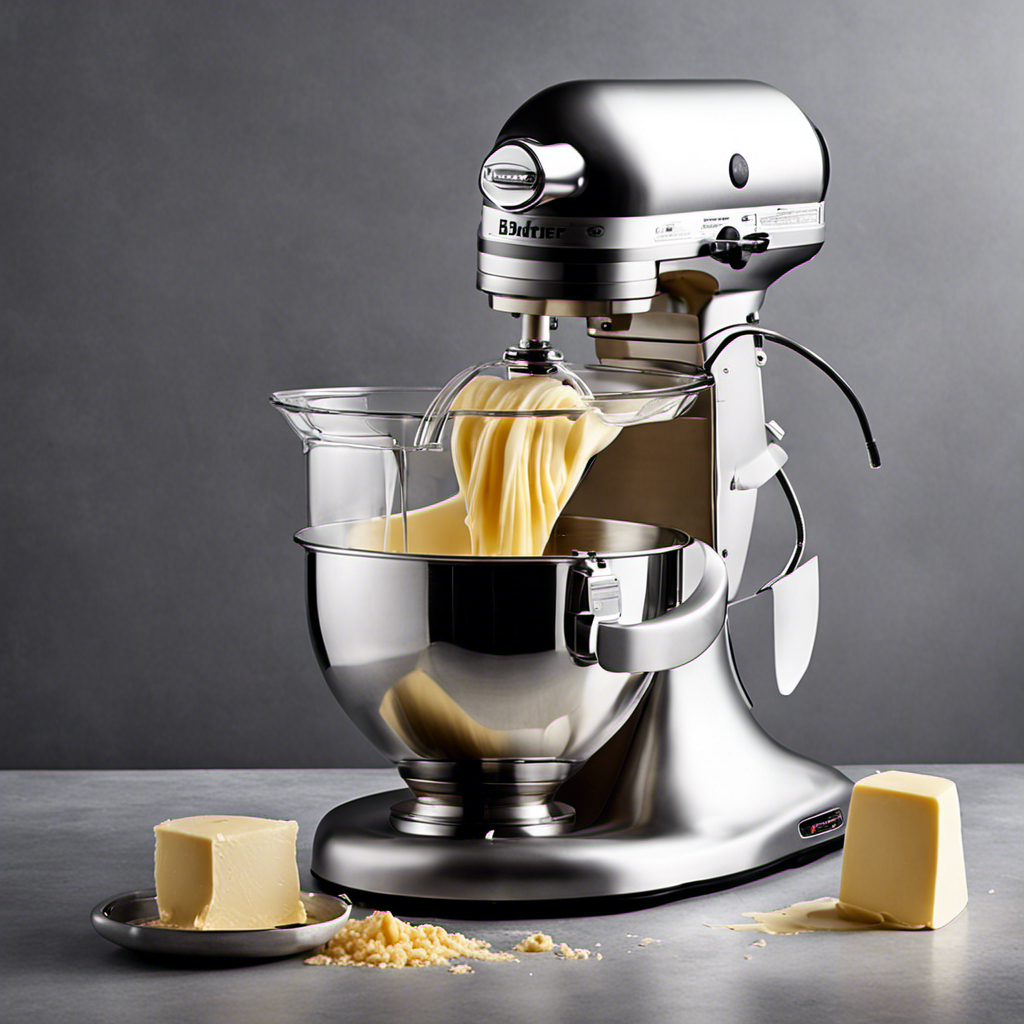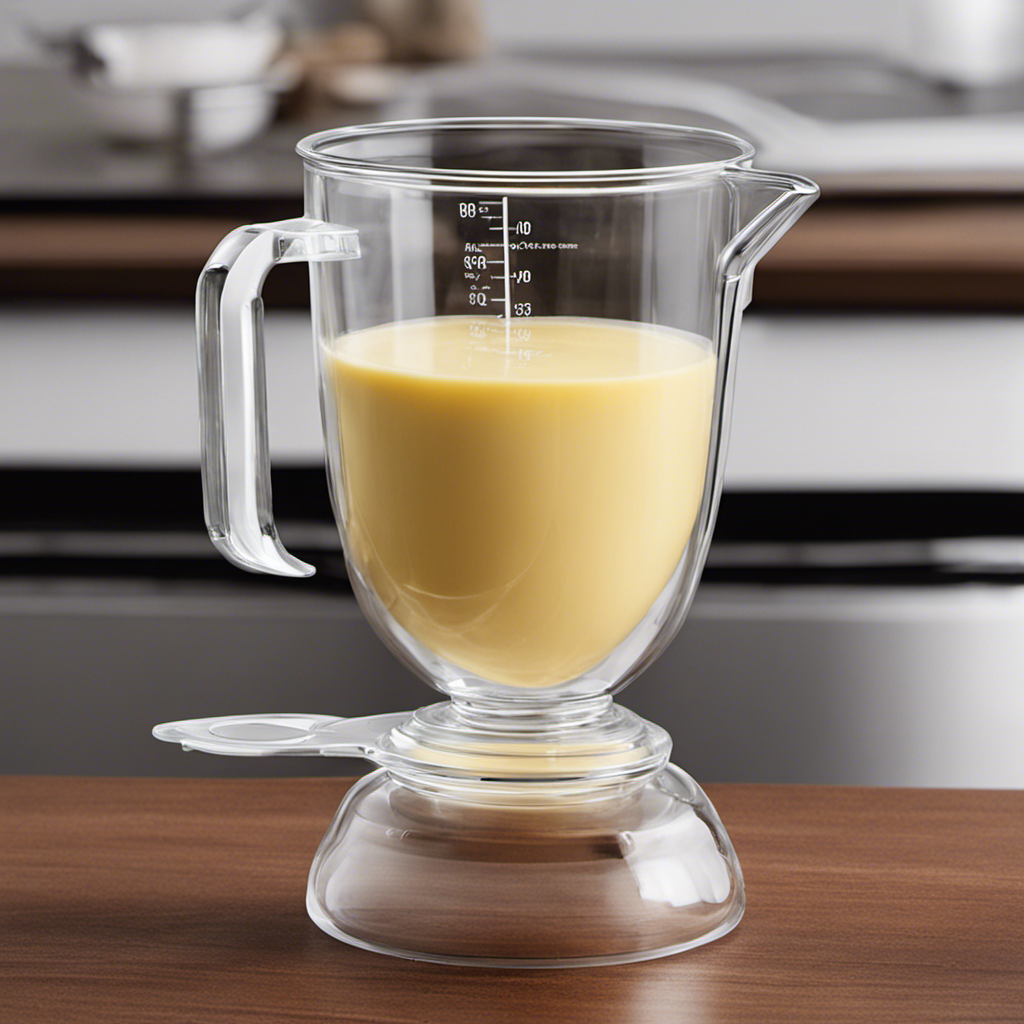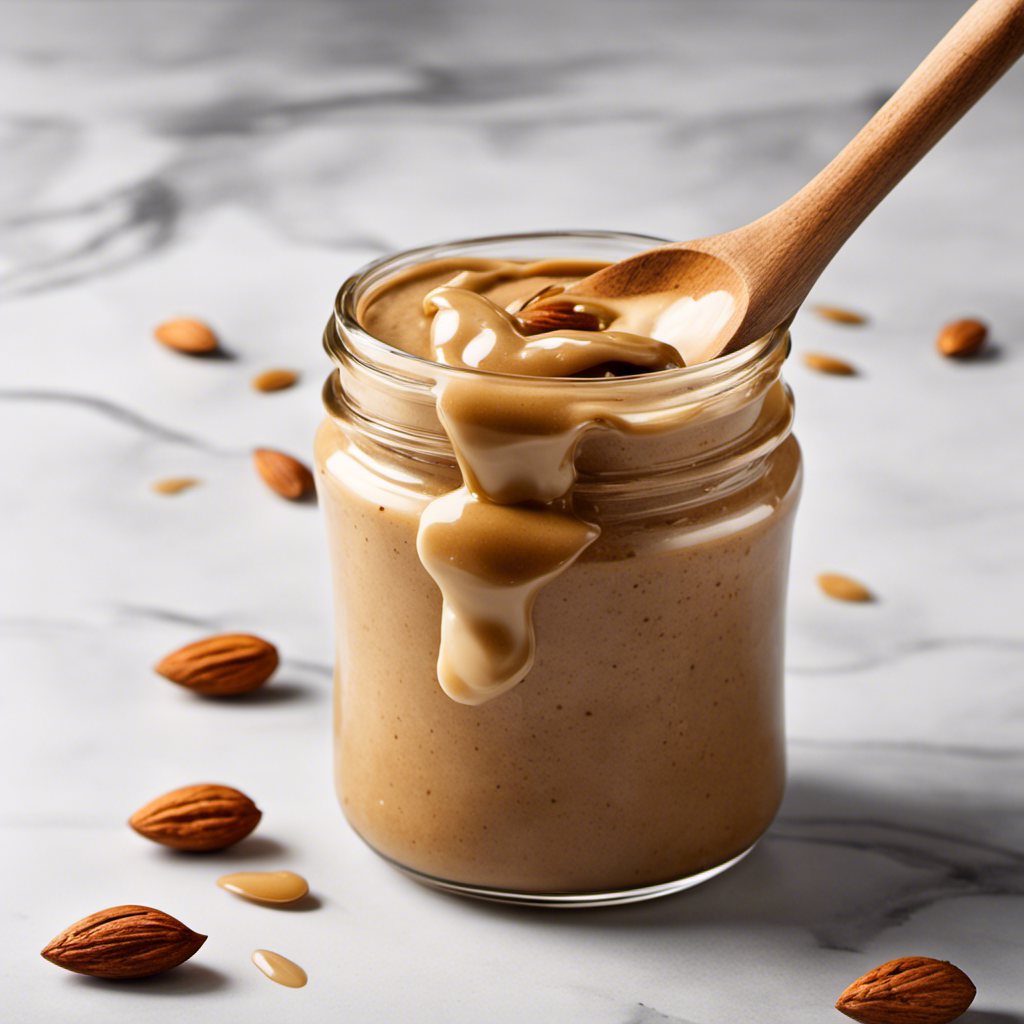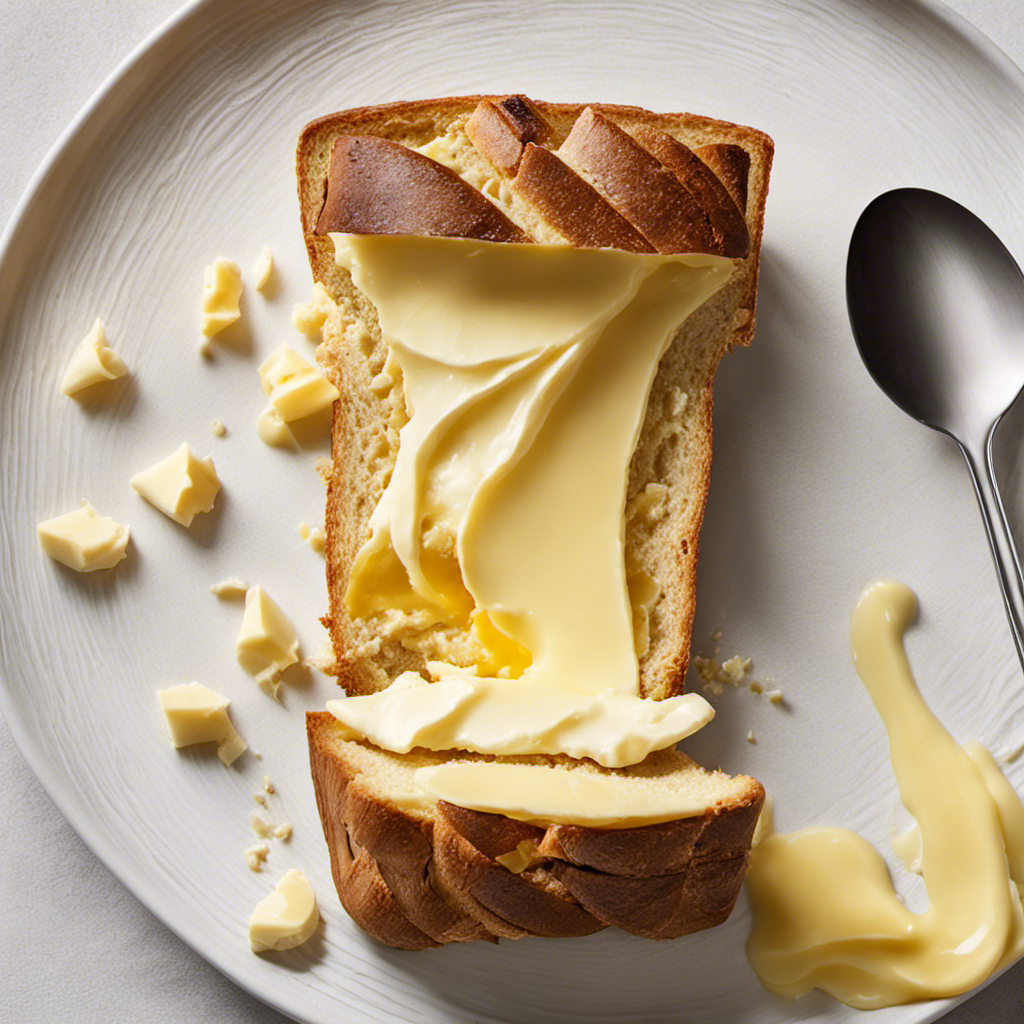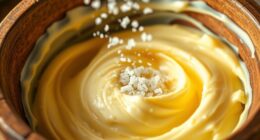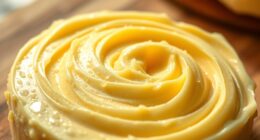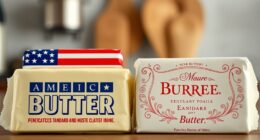I have always been a fan of the rich, nutty taste of clarified butter, but using the traditional stovetop method can take up a lot of time.
That’s why I was thrilled to discover a quicker way to make it in the microwave. In just a few minutes, you can have a jar of golden, clarified goodness ready to use in your favorite recipes.
Trust me, once you try making clarified butter this way, you’ll never go back to the old method.
Key Takeaways
- Making clarified butter in the microwave is quick and convenient.
- Clarified butter made in the microwave is a healthier alternative to regular butter as it contains less lactose and milk solids.
- Clarified butter made in the microwave is rich in essential fatty acids and vitamins A, D, E, and K.
- Making clarified butter in the microwave is a cost-effective option compared to buying it from the store.
The Benefits of Making Clarified Butter in the Microwave
I love making clarified butter in the microwave because it’s quick and convenient. Not only does it save me time, but it also has numerous health benefits when used in cooking.
Clarified butter is known to be a healthier alternative to regular butter as it contains less lactose and milk solids. It’s also rich in essential fatty acids and vitamins A, D, E, and K. By making clarified butter at home, I can ensure its quality and freshness.
Moreover, it’s a cost-effective option compared to buying it from the store. The process is simple, and the ingredients required are minimal, which contributes to significant cost savings in the long run.
Making clarified butter in the microwave allows me to enjoy its health benefits and save money simultaneously.
The Tools You’ll Need to Make Clarified Butter in the Microwave
To prepare clarified butter in the microwave, all you’ll need are a microwave-safe bowl, a fine-mesh strainer, and a heatproof spatula. It’s important to use a microwave-safe bowl to prevent any accidents or damage to your microwave. Additionally, always use oven mitts or a heatproof spatula when handling hot bowls to avoid burns.
Making clarified butter in the microwave isn’t only convenient but also safe if you follow proper microwave safety guidelines. While the microwave method is a popular and efficient way to clarify butter, there are alternative methods such as using a stovetop or slow cooker. However, the microwave method offers a quicker and more convenient way to clarify butter without compromising on quality.
Now let’s move on to the step-by-step instructions for clarifying butter in the microwave.
Step-by-Step Instructions for Clarifying Butter in the Microwave
First, place the microwave-safe bowl with the butter in the microwave. Set the microwave to medium power and heat the butter for about 2 minutes, or until it melts completely.
Here are some alternative methods to clarify butter in the microwave:
- Use a microwave-safe glass measuring cup instead of a bowl for easier pouring.
- Place a microwave-safe plate on top of the bowl to prevent splattering.
- Add a pinch of salt to the butter before melting to enhance the flavor.
- Stir the melted butter gently before clarifying to distribute any solids evenly.
- Let the clarified butter cool for a few minutes before straining to avoid burns.
Common mistakes to avoid when clarifying butter in the microwave include overheating, not using a microwave-safe container, and pouring the butter too quickly, causing the solids to mix with the clarified butter.
Tips and Tricks for Perfectly Clarified Butter in the Microwave
Using a glass measuring cup instead of a bowl makes it easier to pour the clarified butter after it has been melted in the microwave. However, there are alternative microwave methods for clarifying butter that you can try.
One method is to place the butter in a microwave-safe bowl and cover it with a microwave-safe lid or microwave-safe plastic wrap with a few holes poked in it. This helps to prevent any splattering and allows the butter to melt evenly.
Another method is to use a microwave-safe glass jar with a lid. Simply place the butter in the jar, cover it with the lid, and microwave in short intervals, stirring in between, until the butter is melted and the milk solids have settled at the bottom.
When clarifying butter in the microwave, there are a few common mistakes to avoid. Firstly, using too high of a power setting can cause the butter to splatter or burn. It’s best to use a lower power setting, such as 50% power, and melt the butter in short intervals, checking and stirring frequently.
Secondly, microwaving the butter for too long can also lead to burnt butter or a bitter taste. It’s important to keep a close eye on the butter and stop microwaving as soon as it has melted and the milk solids have settled.
Lastly, not straining the butter properly can result in impurities and solids remaining in the clarified butter. Be sure to strain the melted butter through a fine-mesh sieve or cheesecloth to remove any unwanted particles.
Creative Uses for Homemade Clarified Butter
One of my favorite ways to utilize homemade clarified butter is by drizzling it over freshly popped popcorn for a rich and savory snack. The unique recipes using clarified butter are endless, and it adds a delicious flavor to both sweet and savory dishes.
Here are five creative uses for homemade clarified butter:
-
Roasted vegetables: Toss your favorite veggies in clarified butter, sprinkle with salt and pepper, and roast them in the oven for a crispy and flavorful side dish.
-
Pancakes and waffles: Substitute regular butter with clarified butter in your pancake and waffle batter for a lighter and more delicate texture.
-
Grilled cheese sandwiches: Spread a thin layer of clarified butter on the outside of your grilled cheese sandwich before grilling to achieve a perfectly golden and crispy crust.
-
Hollandaise sauce: Use clarified butter as the base for a rich and velvety hollandaise sauce to drizzle over eggs Benedict or steamed asparagus.
-
Baking: Replace regular butter with clarified butter in your baked goods for a moist and tender texture.
In addition to its versatility, using clarified butter in cooking also offers health benefits. It’s lactose-free, making it suitable for those with lactose intolerance. It’s also rich in healthy fats and contains vitamins A, D, E, and K. So not only does clarified butter add a delicious flavor to your dishes, but it also provides nutritional value.
Frequently Asked Questions
Can I Use Any Type of Butter to Make Clarified Butter in the Microwave?
Yes, you can use any type of butter to make clarified butter in the microwave. However, it’s important to note that different types of butter may have slightly different flavors and textures, so the end result may vary.
If you don’t have a microwave, there are alternative methods for making clarified butter, such as using a stove or a slow cooker.
To achieve the perfect texture and flavor in clarified butter, it’s crucial to follow the right temperature and time guidelines.
How Long Does It Take to Clarify Butter in the Microwave?
Clarifying butter in the microwave is a quick and convenient method. It usually takes about 5-7 minutes, depending on the amount of butter being clarified.
The process involves melting the butter in the microwave and then allowing it to rest so that the milk solids separate from the golden clarified butter. This method doesn’t significantly affect the flavor of the butter.
However, there are potential risks, such as overheating and splattering, so it’s important to be cautious and use a microwave-safe container.
Can I Store Clarified Butter in the Refrigerator?
Yes, you can definitely store clarified butter in the refrigerator. It’s actually a great way to extend its shelf life and keep it fresh for longer.
Clarified butter has a higher smoke point than regular butter, making it perfect for cooking and sautéing. It’s also commonly used in baking and as a spread.
What Is the Difference Between Clarified Butter and Regular Butter?
Clarified butter and regular butter differ in a few key ways.
Firstly, clarified butter has a higher smoke point, making it ideal for cooking applications like sautéing and frying. Regular butter, on the other hand, has a lower smoke point and can burn easily.
Additionally, clarified butter has a longer shelf life due to the removal of milk solids, making it less prone to spoilage.
Nutritionally, clarified butter contains higher levels of fat and fewer carbohydrates and proteins compared to regular butter.
Can I Use Clarified Butter for Baking Purposes?
I love baking with clarified butter! It adds a rich and nutty flavor to my cakes and cookies. Plus, it has a higher smoke point than regular butter, which means it won’t burn easily in the oven.
The process of clarifying butter removes the milk solids, leaving behind pure golden fat. This results in a lighter and more tender texture in baked goods.
Conclusion
In the magical realm of the microwave, butter transforms into golden clarity, shedding its impurities and embracing purity. With the right tools and a simple process, you can create this liquid gold in the comfort of your kitchen.
The microwave becomes a vessel of alchemy, unraveling the hidden potential of butter. So, dare to embark on this culinary adventure, and let your taste buds dance to the symphony of perfectly clarified butter.

